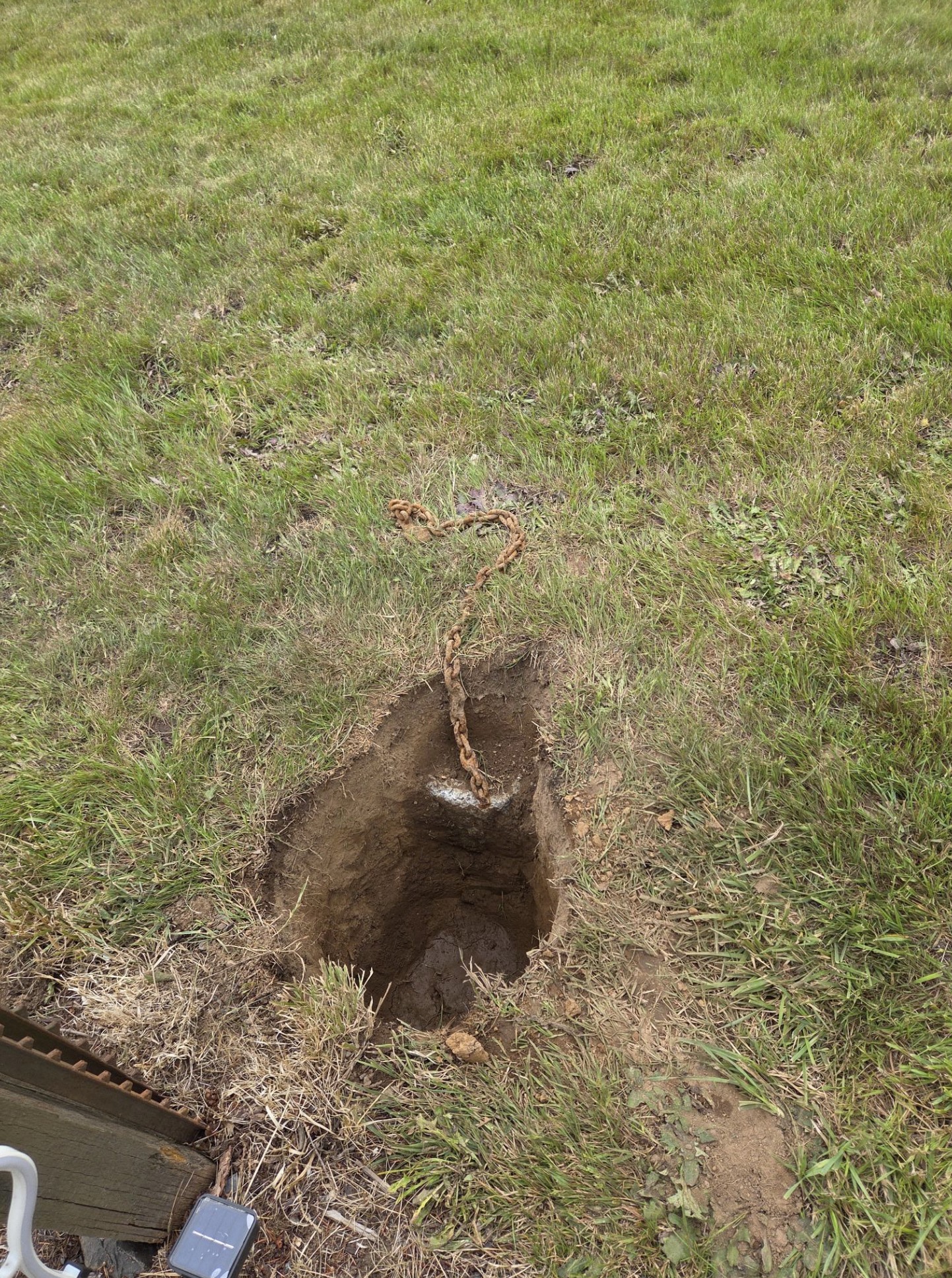Recently, I decided to replace our old, battered mailbox. As I started scraping around the worn-out post, something unexpected caught my eye buried about eight inches below the surface—a rusty chain. My first thought was, “Could this be buried treasure?” But the more I looked, the more curious I became. What exactly was this chain attached to? It turned out to be part of an old post that once anchored a rural mailbox.

For those unfamiliar, a rural mailbox anchor is a clever solution designed to protect mailbox posts from being knocked over. It consists of a chain clipped to a metal anchor, which is then coated in cement and buried underground, connected firmly to the base of the mailbox post. The purpose? To deter anyone from messing with the mailbox by making sure that if someone tried to knock it over—usually reckless truck drivers who thought it was funny to crash into mailboxes—they’d end up with a hefty dent in their bumper or worse. It’s a quiet form of rural justice, creative and effective.
Growing up, I witnessed how mailboxes would often be flattened overnight, sometimes entire rows disappearing in a flash. People got inventive with how they defended their mailboxes. Some filled the posts with concrete, others swapped wooden posts for steel pipes to stand up against the abuse. I even heard stories of folks loading their posts with heavy beams or welding rebar spikes around the base, making it nearly impossible to take down the mailbox without causing significant damage to a vehicle. One particularly memorable story involved a man who welded spikes around his post—someone tried to back into it, and their bumper was the one that paid the price.
Finding that chain left me with mixed feelings—surprise, amusement, and a bit of admiration. Whoever lived here before definitely meant business when it came to protecting their mailbox. I gave the chain a tug, but it was firmly cemented in place, impossible to pull out. I have no idea how deep the anchor goes, but it’s certainly not coming loose anytime soon. Honestly, I think I’ll just leave it as is. It’s a piece of rural history and a reminder of how folks used to handle problems with simple, sturdy solutions rather than relying on technology.
Speaking of which, rural mailbox anchors are still a smart idea today. While modern security measures like cameras and motion sensors can help prevent vandalism, those options aren’t always feasible in remote areas where cell signals are weak or nonexistent. In those situations, the physical deterrent of a sturdy mailbox anchor remains incredibly effective. You could always report mailbox damage to the police, but in many rural areas, that’s often easier said than done. Instead, burying a steel anchor and letting the laws of physics do their work is a practical way to protect your property.
Of course, I’m not suggesting anyone rig their mailbox to actually overturn a vehicle—that would be illegal and dangerous. But reinforcing your mailbox post with a rural anchor? That’s totally reasonable and can save you a lot of headaches. If you’re dealing with mailbox vandalism and can’t cement your post for some reason, a rural mailbox anchor is a simple, inexpensive, and effective solution worth considering.

What struck me the most about finding that rusty chain was how it symbolized the rural mindset—no waiting around for help, no high-tech gadgets, just good old steel, dirt, and sheer determination. It’s a reminder of a time when people solved problems with their hands and a bit of grit. You might call it rural justice or just plain nostalgia, but either way, it’s a testament to the clever, stubborn spirit of those who live outside the city limits.
So, that chain is definitely staying put. It’s not just a piece of metal buried in the dirt—it’s a symbol of resilience, creativity, and the practical edge that defined the “good old days.” It’s a little piece of history that still serves a purpose today, quietly standing guard over what used to be and what still is, one mailbox at a time.





